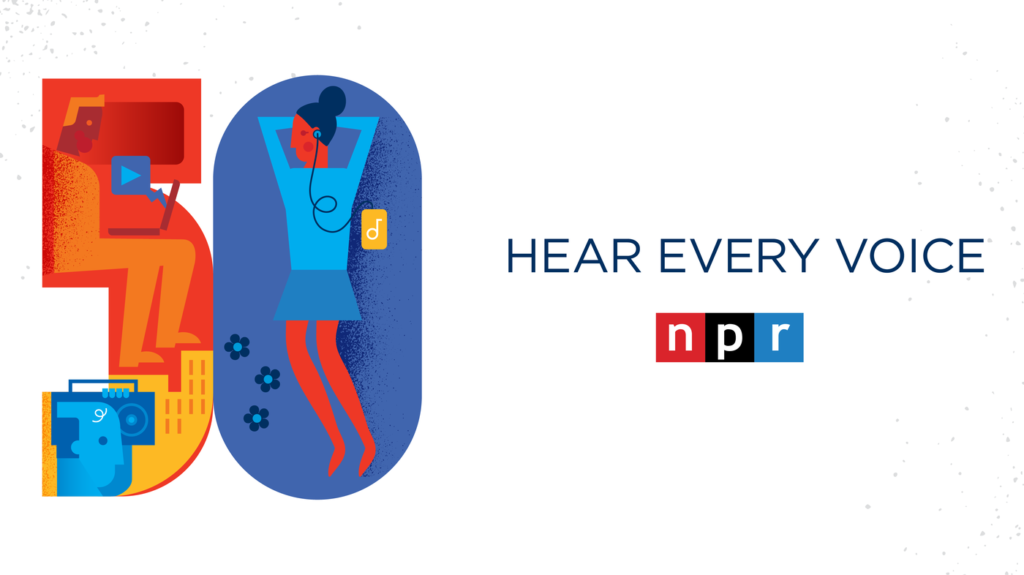
Among the current events that took place last week, many in the public media world were looking back at the quintessential throwback moment – an historic golden anniversary.
You’d have to be living in a cave not to have heard that NPR celebrated the Big 5-0. (That AARP membership solicitation is in the mail.) And justifiably, many NPR alums – past and present – took a well-deserved victory lap.
As you’d expect, NPR didn’t waste the opportunity to both reflect and bask. They were featured throughout the media landscape, from CBS Sunday Morning to The New York Times – and seemingly everywhere in between.
As a cultural information source, it is hard to find comparable brands that have NPR’s level of impact on the country and the world. Our company has had the pleasure and honor to work for and with public radio’s most dominant network over many years. I always feel we learn as much from the experience as we’re able to share with them.
Paul and I have worked with a number of NPR “regimes” over the years, and no matter who is at the helm and who is creating content, you will not meet a brighter, more dedicated group in all of media. They are that good, and deserve the accolades being bestowed upon them.
But now that the virtual street cleaners are sweeping up after NPR’s virtual parade, there’s a begging question revolving around NPR and all who work for this venerable public radio organization:
Now what?
NPR’s current challenges were recently highlighted by Washington Post writer Elahe Izadi in a story titled “Why your favorite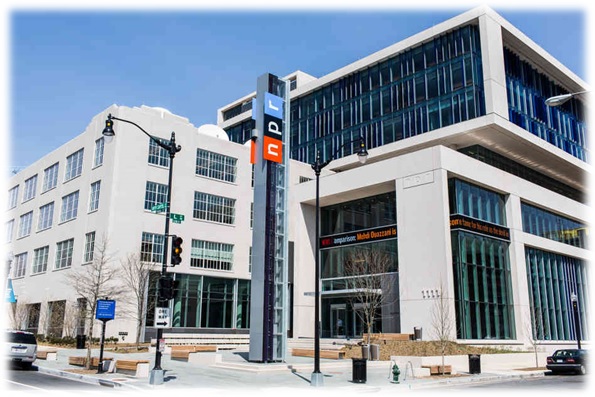 new NPR show might sound like a podcast.”
new NPR show might sound like a podcast.”
Izadi high-fives NPR for its 50th milestone, but notes the network’s demographics (along with the entire public radio system) skews older and whiter than the population. While NPR has become one of the most trusted news brands, it has struggled to diversify its audience.
It’s been part of the public radio conversation for at least the past two decades. Reaching younger and more diverse listeners has been a stated goal, but challenging to achieve.
But now it’s undeniable. As NPR – and all of public radio – stand and celebrate a half century of excellence, the imperative to “expand the tent” has never loomed larger.
We often speak of the “demographic cliff” in commercial radio, especially when we’re talking about formats like Oldies (essentially MIA on the FM band), Classic Rock, and Adult Contemporary – all flirting with danger as growing segments of their audiences “age out” of the sales-popular 25-54 target.
But the PRDC – “The Public Radio Demographic Cliff” – is every bit as steep and daunting. If that name has a ring of familiarity to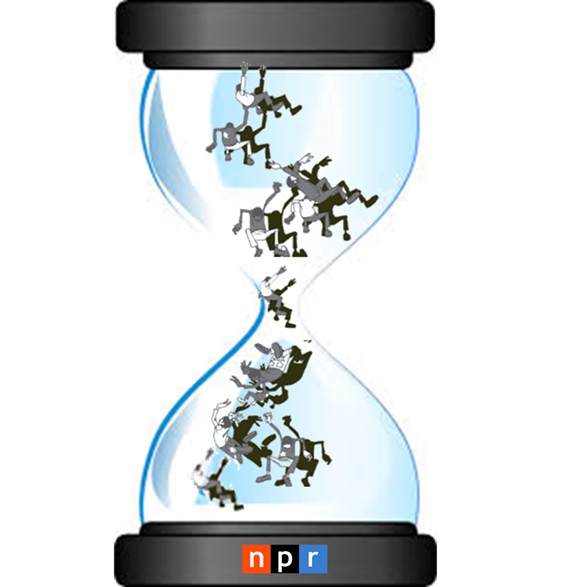 some of you, I blogged about this phenomenon back in 2015, coming off a panel at the Public Radio Programmers Conference that year.
some of you, I blogged about this phenomenon back in 2015, coming off a panel at the Public Radio Programmers Conference that year.
Along with Radio Research Consortium’s Dave Sullivan and Edison Research’s Larry Rosin, the three of us addressed this challenge and how public radio could begin to strategize its way out of this demographic dilemma. Here’s a quote from the blog post:
“(Public radio’s) strong track record for podcasting has helped establish its leadership position in this space. Last year’s Serial got all the headlines – and deservedly so. But public radio’s dominance in on-demand programming includes many of its legacy programs and personalities. Yet, this only scratches the surface and everyone in public radio will tell you that. Data from our PRTS 2015 study demonstrate the appeal of on-demand content among Gen Y, a possible gateway to attracting a younger audience.”
Made sense then – makes even more sense now. Public radio’s antidote to “the cliff” may be content they are already creating, albeit on a different platform.
iHeartRadio podcast guru, Conal Byrne, calls it “derivative content.” At the Podcast Movement conference in 2019 in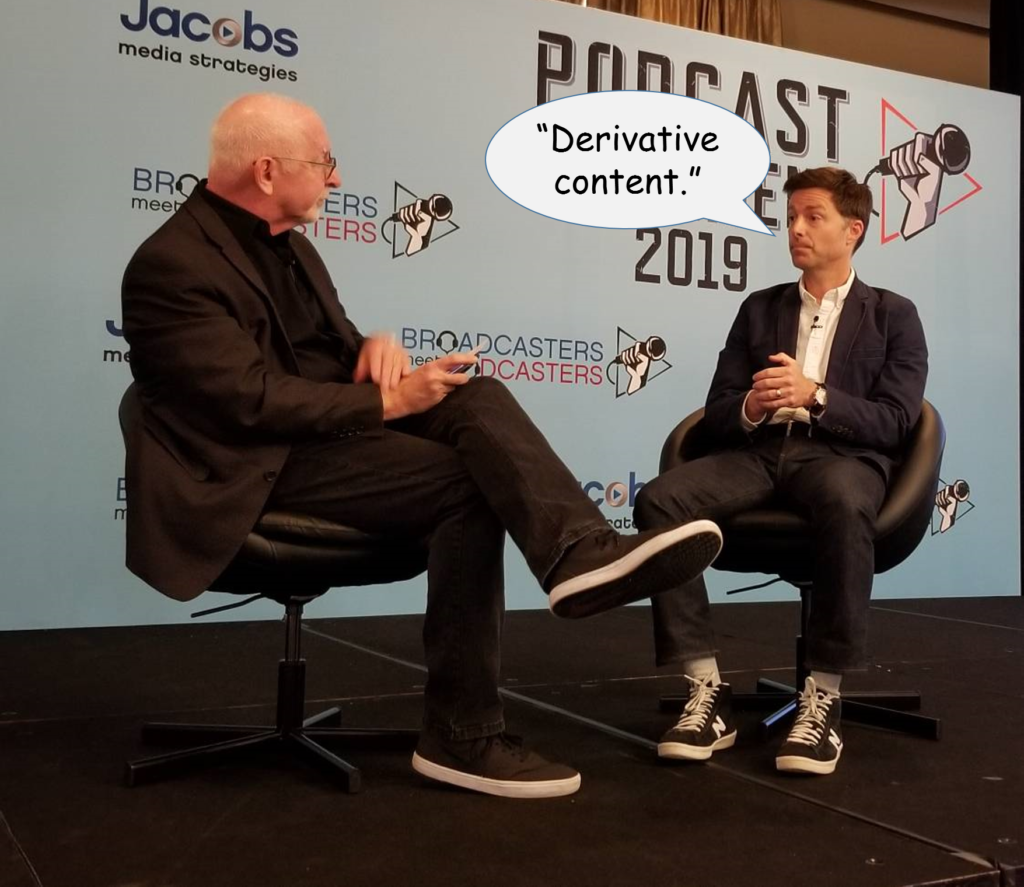 Dallas, Conal keynoted the opening session in our “Broadcasters Meet Podcasters” series. Conal ran the Stuff Works podcast platform before joining the iHeart team as its podcast czar.
Dallas, Conal keynoted the opening session in our “Broadcasters Meet Podcasters” series. Conal ran the Stuff Works podcast platform before joining the iHeart team as its podcast czar.
At the time, he explained that podcast brands, hosts, and related content could transcend the audio format, opening up shows to new audiences using different media.
In that blog post I observed, “Thinking about the podcast franchises in (iHeart Radio’s) stable, there are profitable, brand building extensions to be had for podcasters and executives smart enough to seize the opportunity.
“TV, books, film, merchandise, live theater appearances – all these can be deployed by savvy podcasters and the companies that own their work. In many ways, it’s the rock band model. While music sales and label deals may not be as prolific or as profitable as they once were, musicians and their bands have discovered their own ‘derivative content.'”
And as Byrne explained, the growth opportunity lies in using existing podcasting content to reach previously unreachable audiences.
NPR is on it. Over the past decade and then some, NPR has built up its digital assets, especially its podcasting portfolio. CEO John Lansing announced last year the network would generate more revenue from podcasts than broadcast. And now NPR is using its podcasts as a type of programming proving ground for its over-the-air lineup of shows.
The idea is to create radio shows from podcasts, a concept that has sprung up throughout the audio landscape as content creators reimagine their on-demand audio shows as over the air radio programs.
Sam Sanders’ It’s Been A Minute started as a podcast, but has now become a syndicated NPR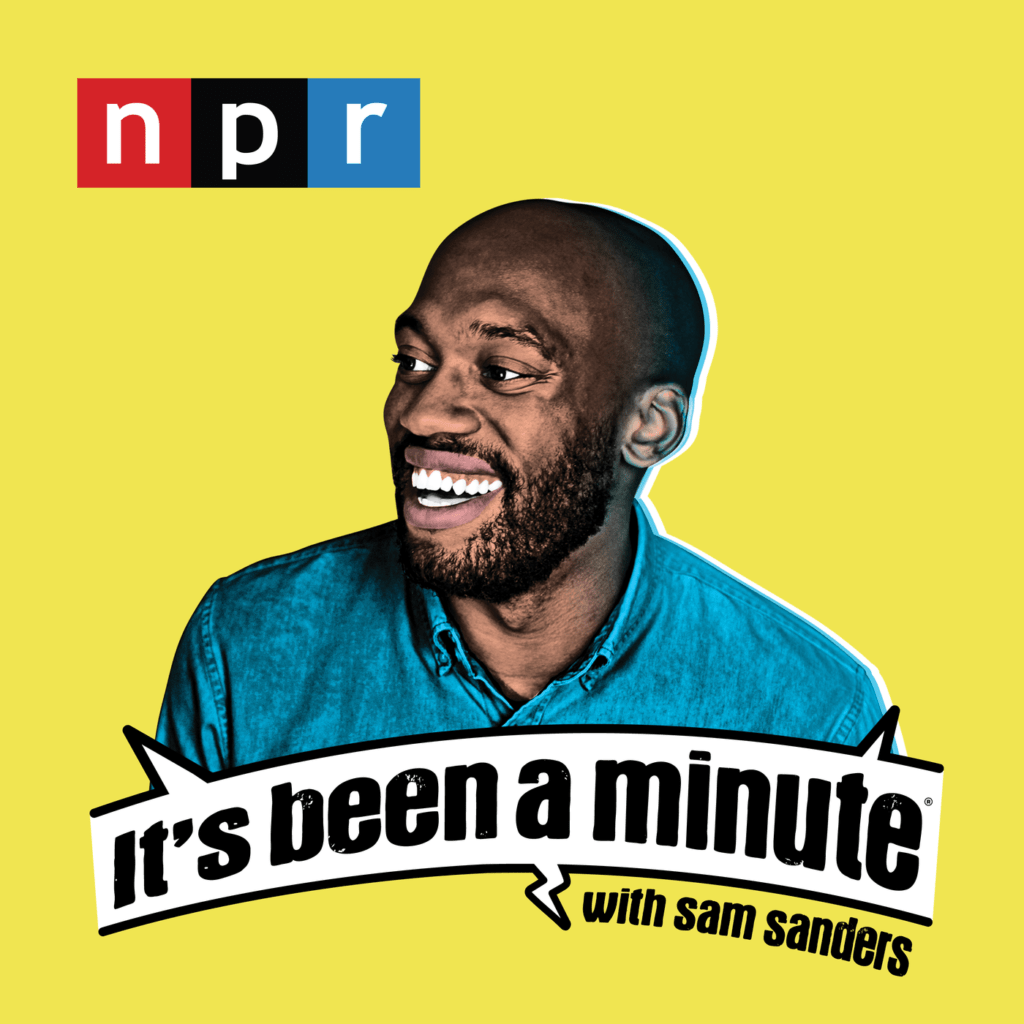 show heard on more than 400 radio stations across the country. And that’s just the beginning.
show heard on more than 400 radio stations across the country. And that’s just the beginning.
The Post’s Izadi reports that other podcasts, originally designed for niche audiences, will find their way into the NPR mainstream.
And the turnaround time is getting quicker – even by public radio standards where production can sometimes be…well, somewhat glacial.
The podcast Throughline launched in 2019, hosted by Ramtin Arablouei and Rund Abdelfatah. It’s a history show that leans on storytelling and sound to tell the stories that shaped our world.
Now it’s coming to the public radio airwaves.
Abdelfatah revealed NPR’s strategy:
“We have a really young audience, and that was part of our goal (for the podcast). But then we knew that the radio audience skews older and Whiter, and we thought this is important for them to hear, too. These are stories that are really worthwhile no matter where you fit in the demographics of the U.S.”
And then there’s the podcast – soon to be broadcast – Code Switch. Apple Podcasts announced it was their first-ever “show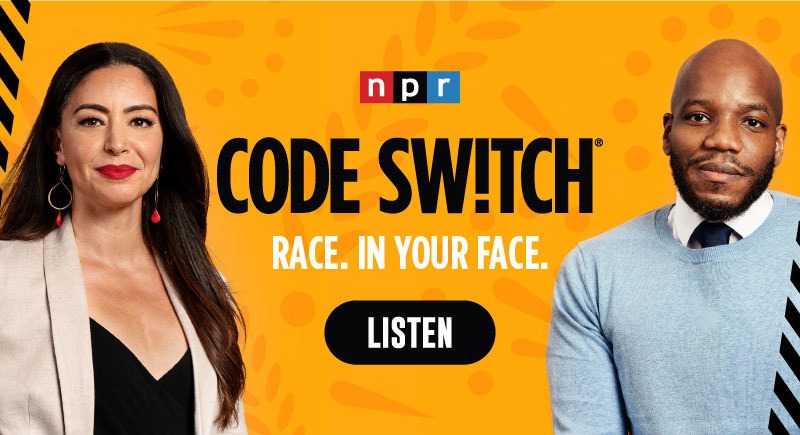 of the year” in 2020. Code Switch faces themes of race and culture head-on. While perhaps risky for NPR to offer as a network program, NPR CEO Lansing reminds the industry of his stated goals:
of the year” in 2020. Code Switch faces themes of race and culture head-on. While perhaps risky for NPR to offer as a network program, NPR CEO Lansing reminds the industry of his stated goals:
“Reach a younger, more diverse audience, and to expand NPR into parts of the American community that (have) otherwise not really found maybe so much resonance with NPR.”
That’s a light years different approach than when Car Talk and Prairie Home Companion were launched decades ago.
As NPR gets back to the business of running a network and being the face of public radio following its golden anniversary celebration, this is an ambitious and precarious time for the network and all of public radio.
I spoke with a radio exec who shall remain anonymous last week about NPR’s chances. As he reminded me, “When it comes to podcasting, NPR had a 10-year head start.”
And when I looked back at my 2015 post from the PRPD Conference, I ended it with this pronouncement about NPR:
“Don’t bet against them.”
Nearly six years later, I’ll double-down on that.
- Media And Technology In 2025: Believe It Or Not! - April 18, 2025
- In Radio, You Just Never Know - April 17, 2025
- The Secret To Making A Great Podcast (And Great Radio) - April 16, 2025




I second your applause for NPR on its 50th, Fred; I’m proud of my contributions as a producer at one of their S.F. Bay Area member stations in the ’90s. So, yes, I am retired now and have “aged out” of radio’s prime demographic, but still I welcome NPR’s use of podcasts to introduce new stuff to the actual airwaves (if it passes its podcast “audition” period). My listening habits were formed long ago–I love the simplicity of just turning on my radio(s) and hearing the cream of the crop while I go about my daily business. Though I am willing to download podcasts to my mobile device (an actual iPod), I like not having to do that for everything. This is radio’s greatest strength.
Long live NPR.
John, I heard ex-Pandora founder, Tim Westergren, once refer to radio’s elegant “one button solution” – something he said made all the other digital players jealous. And no buffering. 🙂 Clearly, the podcast play is a smart way for NPR/public radio to extend its reach – without doing harm to folks like you who enjoy the “old school” way of listening. And the hope is that you just might find something interesting to listen to when “Code Switch” or “Throughline” air. I give them major props for taking this approach. Appreciate the comment.
NPR has been around a long time, for sure. It is not the same NPR as it used to be. It has morphed, evolved, changed, re-aligned, re-invented. It is evolutionary, not revolutionary. That’s why it sticks. It still appeals to demos up and down the scale. Maybe the brainiacs peering at the data through their squinty eyes have missed the point. It’s not about just demos. So….a coupla podcasts have transitioned to the mainstream program list. Not exactly a sea change and that’s a good thing. Disruption is not a strategy.
You’re right, Lalo. They’ve evolved from Schweddy Balls parody to a modern network that meets the listener where they are – without losing cred or compromising their mission. It’s impressive. Amidst all the change, they’ve never lost sight of their job to do.